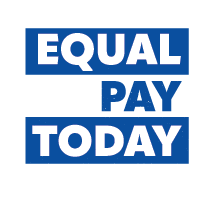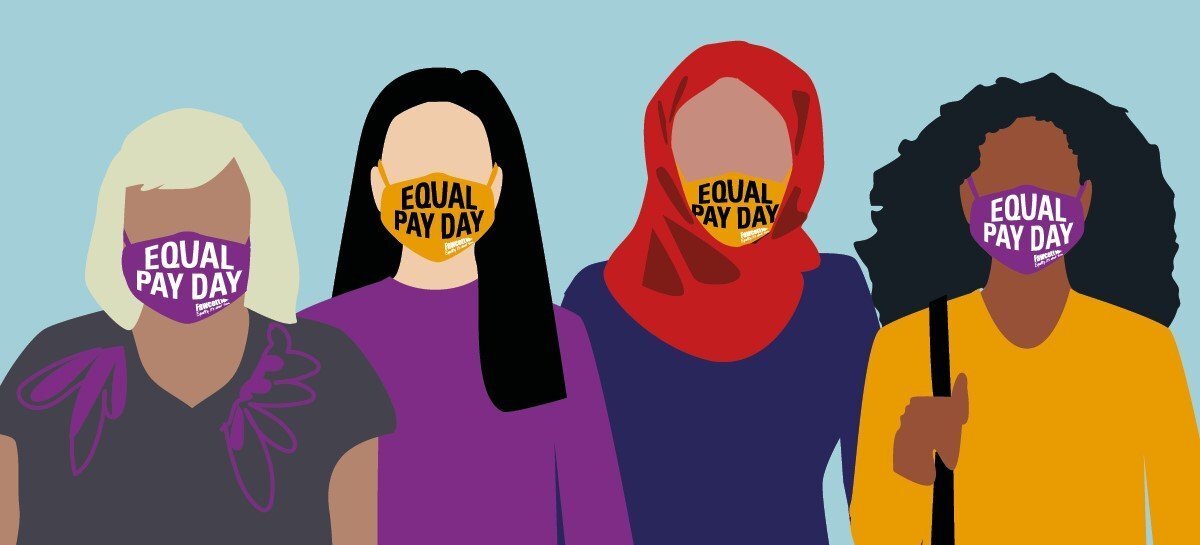Equal Pay Day
date: march 12, 2024
78 cents for "all earners" (full-time, year-round + part-time and part-year)
84 cents for full-time, year-round earners
84 cents: that’s how much women in the U.S. who work year-round are paid for every dollar paid to men according to census data from 2022.
On this day, we will highlight the fact that, according to 2022 Census data, the wage gap for women compared to men is 84 cents on the dollar for full-time, year-round workers. When you look at all earners, including full-time, year-round earners + part-time and part-year workers, the wage gap widens to 78 cents. These wage gaps are unacceptable. Women continue to be are underpaid and undervalued.
This year we are going to be organizing around tools to help close the wage gap through equal pay and more transparency in pay. Pay transparency policy reforms – like the posting of job ranges and banning the use of prior salary history in setting wages – are important tools in the effort to close they wage gap. They require employers to set and publicize wages tied to job duties and experience and increase the information available to employees about how positions are compensated. They decrease subjectivity in setting wages; such subjectivity can allow bias to seep into the process.
Across the country, states are implementing these reforms, and recently the Biden Administration announced that it would ban the use of salary history for setting the wages of federal workers. The administration is also proposing to do the same for employees who work for federal contractors. In Congress, there are bills that would also provide new tools to address pay inequity and increase wage transparency as well. Two such bills are the Paycheck Fairness Act and the Salary Transparency Act.
During this Equal Pay Day, we will be urging members of Congress to support both bills, and are talking about why enacting pay transparency reforms are so important at every level of government.
Our shared federal calls to action will center on urging federal lawmakers to support:
the Paycheck Fairness Act, which would modernize and strengthen the Equal Pay Act of 1963 to better combat pay discrimination and close the wage gap, including by protecting workers from retaliation for discussing pay, banning the use of prior salary history, and codifying pay data collection; and
the Salary Transparency Act, which would help reduce the pay gap by requiring employers to provide the salary range for jobs.
Raise awareness with us several different ways:
1. Follow us on social!
Use the hashtag #EqualPayDay to help us raise awareness about the wage gap for women and its impact on women and their families. Use the social media toolkit (coming soon!) to engage in a robust online dialogue with advocates and community members across the nation.
2. Join the social media storm
Participate in our social media storm on March 12 from 11am PDT/2pm EDT! Share premade content to share on your social media channels! Share widely.
3. Take action to support Paycheck Fairness ACT and the Salary transparency act
Women lose over $400,000 over the course of a 40-year career compared to men. This gap is unacceptable.
Tell Congress to support the #PaycheckFairnessAct and #SalaryTransparencyAct
Previous Equal Pay Days
The Biden-Harris Administration made a proclamation on Equal Pay Day 2022, citing measures the Federal government plans to roll out to improve women’s economic security, pay equality, and more!
“..I am continuing to work with the Congress to pass critical legislation that would lower the cost of child care, elder care, home-based health care, and other major barriers to working families, while raising compensation for care workers, who are disproportionately women of color and who have been underpaid and undervalued for far too long.”
Vice President Kamala Harris emphasized the demand for equal pay during the White House Equal Pay Day Summit, led a conversation with current and former members of the United States Women’s National Team, and more.


